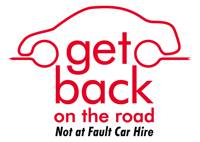You are not at fault when…
When it comes to car insurance, liability is exclusive when it relates to a motor vehicle accident.
There are a number of situations whereby your car can be damaged through no fault of your own, ranging from hail, vandalism or even bushfire.
Damage of this nature is will be generally covered by your comprehensive car insurance policy, but you will more than likely still have to pay the excess.
[/et_pb_text][et_pb_divider color=”#000000″ max_width=”42%” _builder_version=”3.17.6″ custom_margin=”||”][/et_pb_divider][et_pb_text _builder_version=”3.17.6″]
When 2 or more cars are involved in an accident, the liability can be shared between the parties.
But there are some accident scenarios in which only 1 driver is likely to be considered completely at fault.
- Admitting liability at the accident scene. After any accident, if Driver A says something to the nature of “I didn’t see you” or even makes an apology to Driver B in the presence of a witness, courts frequently deem this to be an admission of liability and Driver A can be found at fault.
- If a driver is intoxicated. Fault will be assigned to a driver who is under the influence of drugs or alcohol, if the other driver is not intoxicated in any way.
- Being rear-ended by another vehicle. If someone runs into the back of your vehicle, they will nearly always be considered at fault.
- Failing to obey a “stop” or “give way” sign. If it can be shown that the other driver failed to give way to you whilst you were driving legally, they can be found at fault unless there was any action you could have taken to prevent the accident (such as applying the brakes or swerving).
- Running a red light. If another car collides with you as a result of not obeying a traffic light, they will be found at fault in the majority of cases. If you had any opportunity to prevent the accident, but did not do so, you may be liable for contributing to the accident due to negligence.



